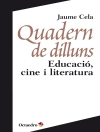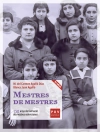Engage diverse learners in your classroom with culturally responsive instruction!
How to Teach Students Who Don′t Look like You helps educators recognize the impact that culture has on the learning process. The term ‘diverse learners’ encompasses a variety of student groups, including homeless children, migrant children, English language learners, children experiencing gender identity issues, children with learning disabilities, and children with special needs.
This revised second edition reflects the latest trends in education, and includes new coverage of standards-based, culturally responsive lesson planning and instruction, differentiated instruction, RTI, and the Common Core State Standards. Bonnie M. Davis helps all educators:
- Tailor instruction to their own unique student population
- Reflect on their own cultures and how this shapes their views of the world
- Cultivate a deeper understanding of race and racism in the U.S.
- Create culturally responsive instruction
- Understand culture and how it affects learning
How to Teach Students Who Don′t Look like You provides crucial strategies to assist educators in addressing the needs of diverse learners and closing the achievement gap.
‘This book ′fires up′ educators by speaking from the soul to reach the heart, from the research to engage the mind, and from the skillful hand to build the necessary expertise.’
—Peggy Dickerson, Professional Service Provider
Region XIII Texas Education Service Center, Austin, TX
‘The vignettes and classroom situations help the reader understand how race plays out in our society and in our classrooms. Dr. Davis takes on a very volatile topic and is able to engage the reader without offending. The examples, vignettes, cases, and stories will hook the readers just as they did me. Once I began reading the book, I could not put it down.’
—Ava Maria Whittemore, Minority Achievement Coordinator
Frederick County Public Schools, MD
İçerik tablosu
Foreword by Curtis Linton
Preface
Acknowledgments
About the Author
How to Read the Book
Part I. Looking Inside Ourselves
1. Our Culture: The Way We View the World
2. Reflection Questions for Examining Our Inner Selves
3. Exploring Our Racial Identity Through Our Racial History
4. What Is Race?
5. A Day in the Life . . .
Part II. Listening to and Learning From Others
6. What Do We Need to Know About Culturally Diverse Learners?
7. Latino/a/Hispanic Learners: A Personal Story
8. New Immigrant Learners of the Twenty-First Century
9. What the Research Says About Learning Gaps
10. How to Build Relationships With Culturally Diverse Students and Families
11. Creating a School Culture That Welcomes Students, Staff, and Families
Part III. Integrating New Knowledge
12. Strategies to Teach and Engage Culturally Diverse Learners and ELs
13. Moving Students From Apathy to Passion: Learning to Love Reading and Writing
14. Standards-Based, Culturally Responsive Lessons That Engage Learners
15. Readers and Writers Workshop: A Model for Standards-Based, Culturally Responsive Instruction
16. Teachers in Today′s Classrooms Share Their Lessons
Part IV. A Call to Action
17. A Call to Action: Sponsoring Academic Student Support Groups
18. A Call to Action: Taking Care of Yourself
References and Resources
Index
Yazar hakkında
Consulting Description Bonnie M. Davis, Ph D, is a veteran teacher of more than forty years who is passionate about education. She taught in middle schools, high schools, universities, homeless shelters, and a men’s prison. She holds a doctorate in English from St. Louis University and is the recipient of numerous awards, including Teacher of the Year in two public school districts, the Governor’s Award for Excellence in Teaching, and the Anti-Defamation League’s World of Difference Community Service Award. She has presented at numerous national conferences and currently works in school districts across the country. Dr. Davis’ work centers on examining what “we don’t know we don’t know” about ourselves in order to more effectively teach students who don’t look like us. Moving from self reflection to action, her books offer educators culturally responsive, standards-based instructional strategies that bridge culture, language, race, and ethnicity.Dr. Davis’s publications include the How to Teach Students Who Don’t Look Like You: Culturally Responsive Teaching Strategies(2012);How to Coach Teachers Who Don’t Think Like You: Using Literacy Strategies to Coach Across Content Areas (2007); The Biracial and Multiracial Student Experience: A Journey to Racial Literacy(2009); and Creating Culturally Considerate Schools: Educating Without Bias (2012) with coauthor Kim L. Anderson. She is currently working on the Equity 101 Series with Curtin Linton, Executive Vice President of School Improvement Network.












